By Carlo Ratti Associati
Renders: Carlo Ratti Associati
Read Time: 2 mins
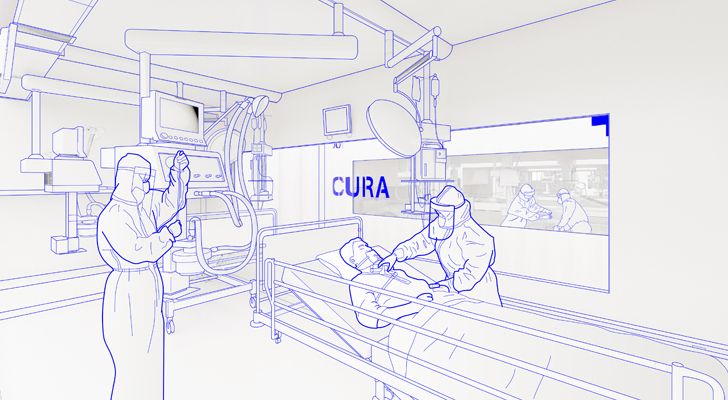 |
| . |
CURA (Connected Units for Respiratory Ailments) aims to convert shipping containers into plug-in Intensive-Care Pods for the COVID-19 pandemic.
Amidst the COVID-19 pandemic, an international task force of designers, engineers, medical professionals, and military experts have joined forces to work on CURA (cure in Latin), an open-source project aimed at capacity building in Intensive-Care Units (ICU).
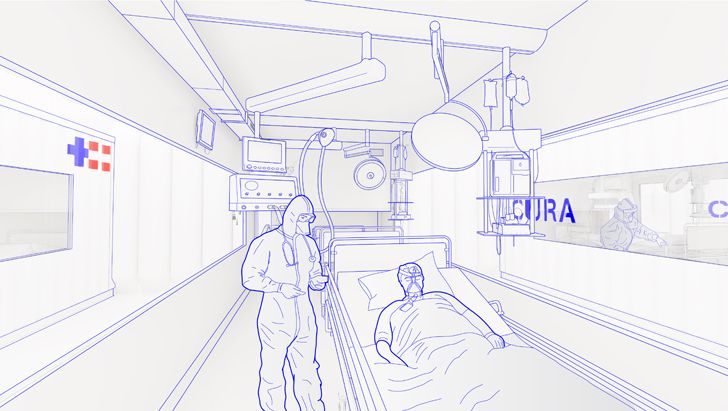 |
| . |
A compact Intensive-Care pod for patients with respiratory infections, CURA is hosted in a repurposed 20-foot intermodal shipping container with biocontainment (thanks to negative pressure). Each unit works autonomously and can be shipped anywhere. Individual pods are connected by an inflatable structure to create multiple modular configurations (from 4 beds to over 40), which can be deployed in just a few hours. Some pods can be placed in proximity to a hospital (e.g. in parking lots) to expand the ICU capacity, while others could be used to create self-standing field hospitals of varying sizes.
CURA aims to improve the efficiency of existing solutions in the design of field hospitals, tailoring them to the current pandemic. In the last weeks, hospitals in the countries most affected by COVID-19, from China to Italy, Spain to the USA, have been struggling to increase their ICU capacity to admit a growing number of patients with severe respiratory diseases, in need of ventilators. Whatever the evolution of this pandemic, it is expected that more ICUs will be needed internationally in the next few months.
 |
| . |
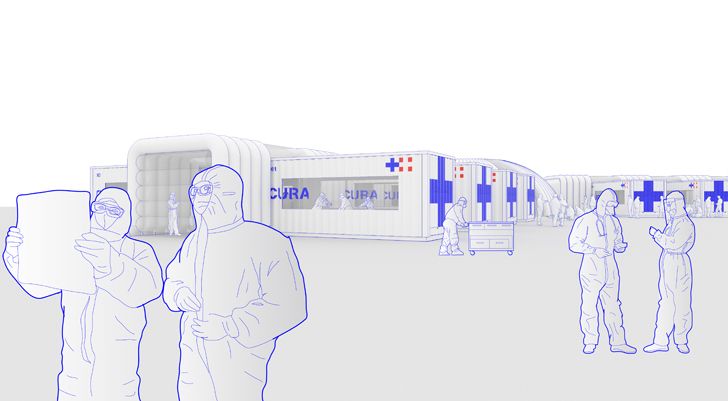 |
| . |
The response to the emergency in China and Italy so far has been to set up makeshift emergency hospitals such as tents or build new prefabricated wards with biocontainment. While the latter option is time and resource-intensive, the former one exposes medical professionals to a higher risk of contamination and adds operational strain, especially in the long run. Learning from both approaches, CURA strives to be as fast to mount as a hospital tent, and as safe as a hospital’s isolation ward to work in, thanks to biocontainment (an extractor creates indoor negative pressure, complying with the standards of Airborne Infection Isolation Rooms AIIRs). It follows the standards for COVID-19 hospitals issued by the Chinese authorities, while speeding up execution.
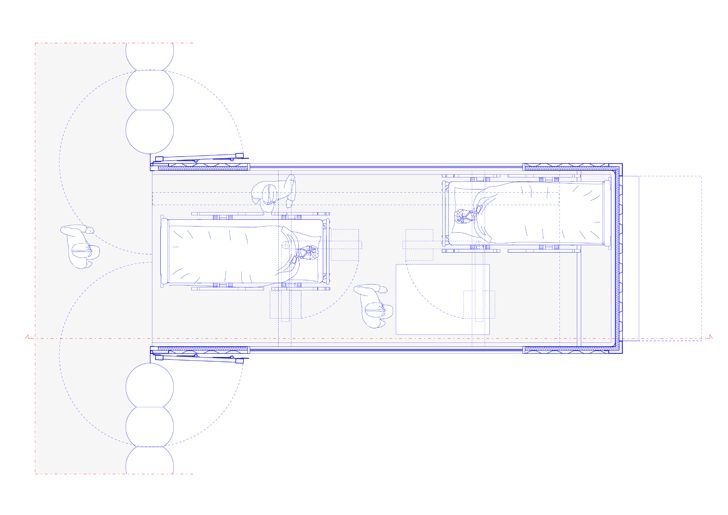 |
| . |
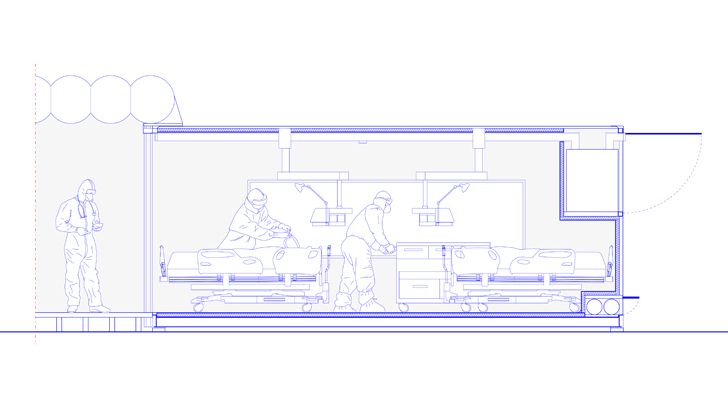 |
| . |
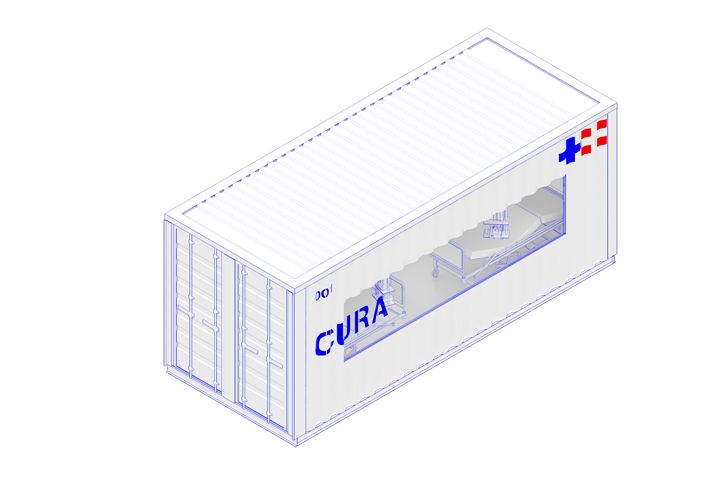 |
| . |
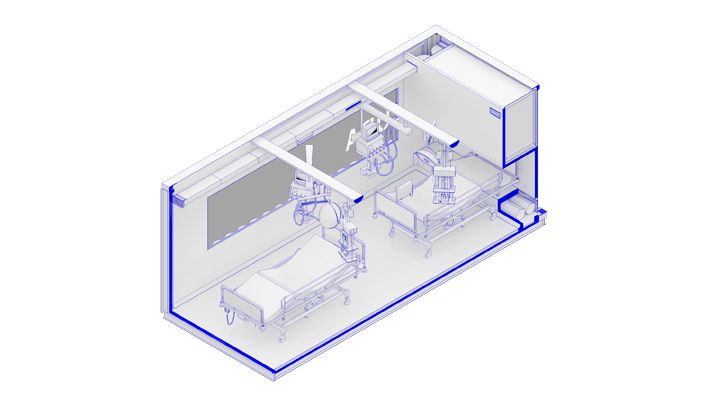 |
| . |
Each CURA pod would contain all the medical equipment needed for two COVID-19 intensive-care patients – including ventilators and intravenous fluids stands. All units can be connected by an inflatable corridor. The first CURA pod is being built for test at a hospital in Milan, Italy under the aegis of European bank UniCredit.
CURA pods are being conceived as a ready-to-use solution. Shipping containers can easily be moved through different modes of transport - from ship to rail to truck - and re-used in different parts of the world, adapting to the needs and capacity of the local healthcare infrastructure.
CURA is developed in an open-source, non-for-profit framework and solicits suggestions and improvements.
More information is available on www.CURApods.org
List of people and organizations who have contributed thus far to CURA (in chronological order):
- CRA-Carlo Ratti Associati with Italo Rota (Design and Innovation)
- Humanitas Research Hospital (Medical Engineering)
- Policlinico di Milano (Medical Consultancy)
- Jacobs (Alberto Riva - Master Planning, design, construction and logistics support services) studio FM milano (Visual identity & graphic design)
- Squint/opera (Digital media)
- Alex Neame of Team Rubicon UK (Logistics)
- Ivan Pavanello of Projema (MEP Engineering)
- Dr. Maurizio Lanfranco of Ospedale Cottolengo (Medical Consultancy)
With the support of the World Economic Forum: COVID-19 Action Platform, and Cities, Infrastructure and Urban Services Platform, CURA is an open-source project.
To share ideas or suggestions, visit the website www.CURApods.org

That’s a wonderful Initiative.
ReplyDelete